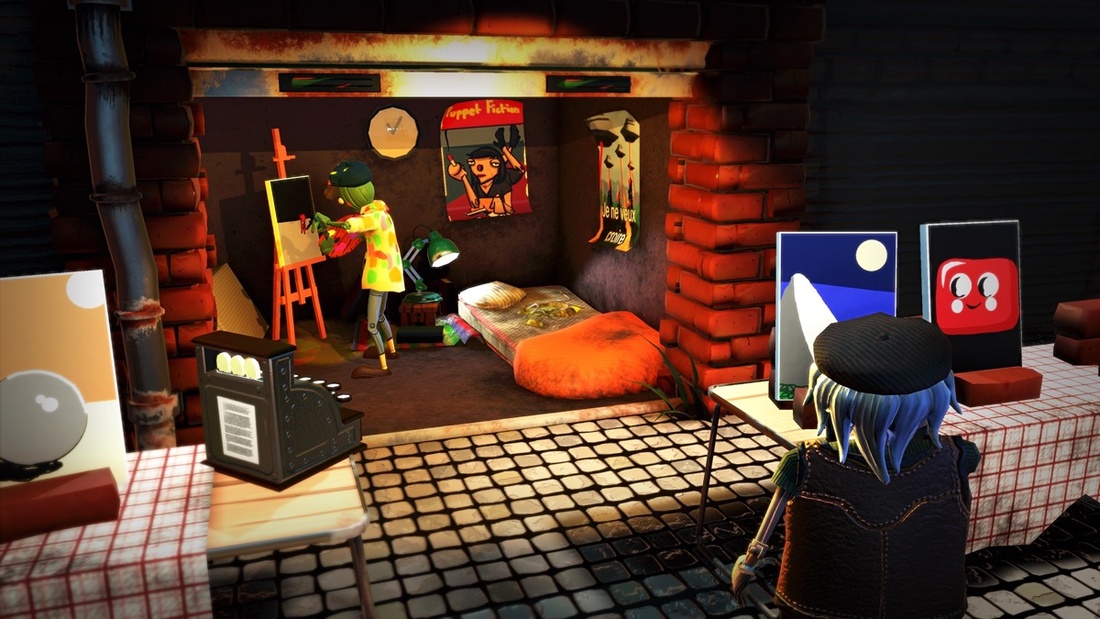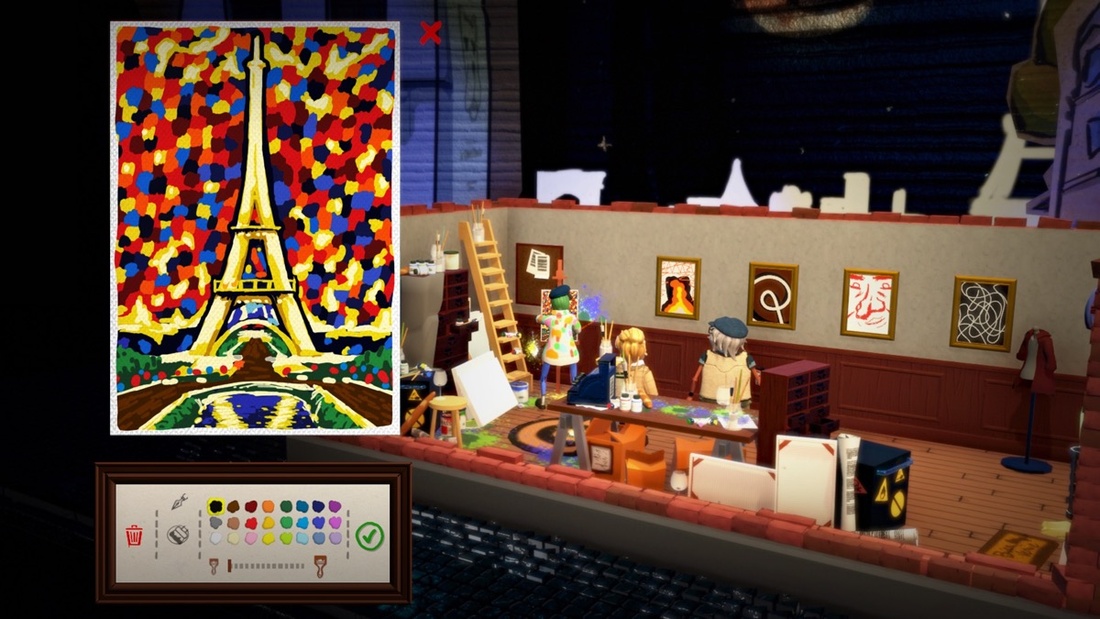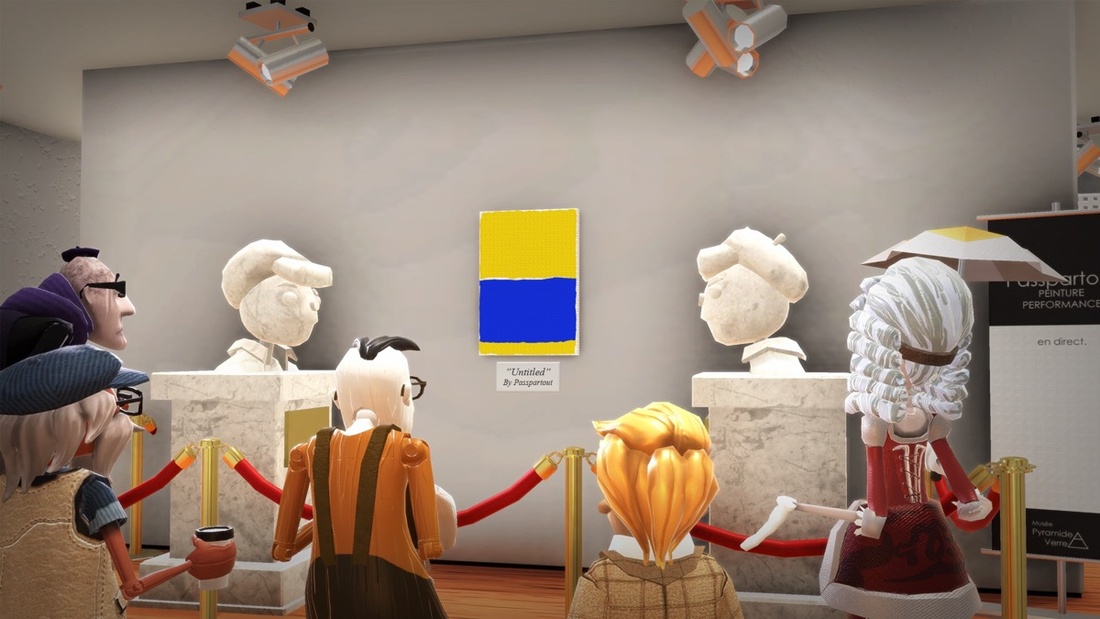Become an Art World Sensation in This Addictive Video Game
 Still from Passpartout, courtesy of Flamebait Games.
Still from Passpartout, courtesy of Flamebait Games.
Make art, sell art, get reviewed. That’s the basic formula familiar to both starving artists and those showing at blue-chip galleries. The journey from rags to riches is often grueling and full of hardship—unless, that is, you’re playing the new video game Passpartout.
In this enchanting art-world simulator, released last month, you play the titular character, creating virtual paintings; in my case, they generally involved a series of brightly colored squiggles. The next step is to try and sell these masterpieces to discerning (and often quite rude) collectors. With any luck, you hock enough canvases to pay off your bills—including for what the game deems artist-required expenses, such as wine and baguettes. Time goes on—at some point, a spindly critic comes to review your work—and you progress from a humble, dingy garage all the way up the art-world ladder. Ultimately, your version of the storyline depends on the art you create.
Developed by Sweden-based Flamebait Games, Passpartout is partly a light-hearted satire of the art world (hipsters stopped buying my work once I got too popular). But it has also provided a platform that genuinely empowers players to be artistically creative. Gustav Rosberg, a graphic artist at Flamebait, describes the core of the desktop computer game succinctly: “You have a Microsoft Paint set of tools, and then people come and criticize your work.”
 Still from Passpartout, courtesy of Flamebait Games.
Still from Passpartout, courtesy of Flamebait Games.
But that simple premise launched Passpartout to unexpected creative and financial success. It’s been downloaded 70,000 times and spawned numerous YouTube videos tracking players’ individual travails through their personal art worlds. Virtual painters have shared countless posts of their creations on Steam (a platform distributing the game), ranging from Starry Night riffs to memes.
While Passpartout lets you moonlight as a starving artist without actually going hungry, it isn’t for the entirely faint of heart. The collectors in the game can be ruthless. One work I toiled over—an urban nightscape—was so roundly rejected that I had to pull it down from the wall in defeat. “You made a painting but you didn’t make art,” was a harsh, and common, review from my digital gallery visitors. Things turned around when I made an imitation of a Damien Hirst spot painting, which was gobbled up for $100 by Steve, one of my earliest and most loyal collectors.
 Still from Passpartout, courtesy of Flamebait Games.
Still from Passpartout, courtesy of Flamebait Games.
What determines if a collector buys your work? For one thing, it’s their personality. Different collectors have different tastes, just as some offer more money for your paintings than others. While Steve kept coming back for more, I was routinely shunned by another would-be purchaser with spiky hair and a punk vibe. I struggled to make something that appealed to her. Eventually a sharp piece in red and yellow, titled Angry, did the trick.
But she and Steve paled in comparison to the critic, resembling Beetlejuice, who periodically reviews your work as you progress through the game’s three-act structure. There are numerous different story outcomes—you can wind up as the next Andy Warhol, or a stuffy, aristocratic painter, says Rosberg. That’s mirrored by the soundtrack throughout, created by Synkronosaurus, which “is written to fit the type of art you’re doing.” he adds.
 Still from Passpartout, courtesy of Flamebait Games.
Still from Passpartout, courtesy of Flamebait Games.
Rosberg doesn’t want to divulge how, exactly, the game evaluates your artworks. He does deny some wild speculations that the program involves neural-networks and advanced A.I. “You don’t need something incredibly complicated to give the feeling that people in the game have different preferences,” he says, noting that the game’s algorithms respond to various factors: the distribution of color blocks in a composition, for instance, or the number of brushstrokes.
That there would be no such thing as universally-acknowledged “good” art was a conscious decision on the part of the five-member Flamebait team over the course of Passpartout’s year-long development. “A lot of people ask, ‘How do I paint the best art that everyone will enjoy?’” Rosberg explained. “But you can’t please everyone.” It’s yet another way Passpartoutaccurately captures the realities of the notoriously fickle art world.

No comments:
Post a Comment